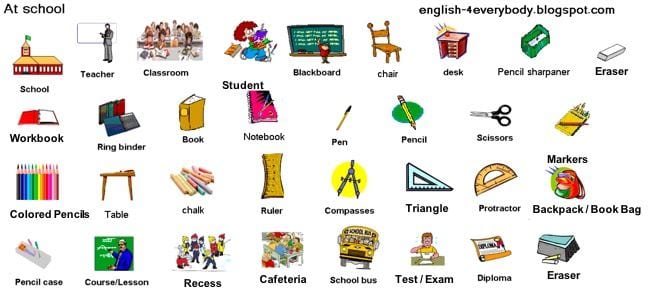Charlie's Visual Vocabulary
Learn the technical details as System Requirements of Any Video Converter Free for Mac. Tech spec for any video converter free for.What is this section all about?

This is the marquee section for Wordpandit, this is our pride and this is our claim to fame. ‘Visual Vocabulary’ allows you to use Word-Posters (which use illustrations accompanied with explanatory text) to learn words. The section is based on one simple principle: it is easier for us to learn stuff visually. Based on this simple one-line philosophy, this section has currently more than 600 words for your consumption. So get to work and start learning words immediately. Charlie S Visual Vocabulary Template#23 I-1901-8D SAVINA MORALES CHARLIE/ESCOBAR/THOMAS Demography Visual Vocabulary Demographic Population Distribution Life Expectancy Birth Rate Growth Rate Infant Mortalilty Rate HDI Mortality Rate Population Pyramid The study of human population graphic device that shows gender and age distribution of population average number of people who live in a measurable area The average period of time in years that a person may expect to live.
Number of births per 1000 organism in an area The rate at which a population grows in a given year. Calculated by (Birth Rate - Death Rate) / 10 = Growth Rate in% The ratio of deaths in an area to the population of that area; expressed by 1000 per year Human Development Index is the number of deaths of infants under one year old per 1,000 live births. Visual Vocabulary For Kids. Start studying Charlie's SAT Vocabulary. Learn vocabulary, terms, and more with flashcards, games, and other study tools. The Visual Vocabulary – Tableau Style. First, here is a link to Andy’s workbook on Tableau Public.
Tableau Visual Vocabulary Workbook Link. Below is a screenshot of the main page of his workbook.Charlie still regards himself as a craftsman due to his early involvement in his family’s ecclesiastical decor business for Scotland’s Catholic churches. In fact, he is a life member elect of the Master Craftsmen’s Guild of the City of London. Post navigation.
.Financial Times Visual Vocabulary A poster (available in, and ) and to assist designers and journalists to select the optimal symbology for data visualisations, by the. The FT Visual Vocabulary is at the core of a newsroom-wide training session aimed at improving chart literacy.
Visual Vocabulary For Kids
This learning resource is inspired by the by Jon Schwabish and Severino Ribecca. This is not an attempt to teach everyone how to make charts, but how to recognise the opportunities to use them effectively alongside words.Read the feature column for full background on why we made this: For D3 templates for producing many of these chart types in FT style, see our. Related reading The full content of the poster, along with links to related material, including research and examples of best practice. This is a work in progress. National Geographic.
Cleveland and Robert McGill.Hadley Wickham. Weissgerber et al. Numeroteca.Tableau Tip Tuesday: Two Methods for Creating Dashed Lines dashed lines. Thanks Charlie. After talking to Eva, she just colored each year but my solution would be work as data gets added. Financial Times Visual Vocabulary: Tableau Edition.
My Portfolio. Follow my portfolio on Pinterest. Data Viz Favorites.Andy Cotgreave.
Alberto Cairo. Alberto Cairo: Deviation Emphasise variations (+/-) from a fixed reference point. Typically the reference point is zero but it can also be a target or a long-term average.
Can also be used to show sentiment (positive/neutral/negative). Example FT uses: Trade surplus/deficit, climate change Diverging bar A simple standard bar chart that can handle both negative and positive magnitude values.Chart Doctor: Diverging stacked bar Perfect for presenting survey results which involve sentiment (eg disagree/neutral/agree). Spine chart Splits a single value into 2 contrasting components (eg Male/Female) Surplus/deficit filled line The shaded area of these charts allows a balance to be shown – either against a baseline or between two series. Correlation Show the relationship between two or more variables.Be mindful that, unless you tell them otherwise, many readers will assume the relationships you show them to be causal (i.e. One causes the other). Visual Vocabulary For KidsExample FT uses: Inflation & unemployment, income & life expectancy. Chart Doctor: Scatterplot The standard way to show the relationship between two continuous variables, each of which has its own axis.
Charlie S Visual Vocabulary TemplateChart Doctor. Maarten Lambrechts.Tim Brock.

Sara Kehaulani Goo. Chart Doctor. Examples: Line + Column A good way of showing the relationship between an amount (columns) and a rate (line). Data Revelations.
Harvard Business Review: Connected scatterplot Usually used to show how the relationship between two variables has changed over time.Robert Kosara. Data Revelations. Charlie S Visual Vocabulary FlashcardsExamples: Bubble Like a scatterplot, but adds additional detail by sizing the circles according to a third variable. Chart Doctor. Examples: XY heatmap A good way of showing the patterns between 2 categories of data, less good at showing fine differences in amounts.
Visual Vocabulary Definition
Chart Doctor: Ranking Use where an item’s position in an ordered list is more important than its absolute or relative value.Don’t be afraid to highlight the points of interest. Example FT uses: Wealth, deprivation, league tables, constituency election results Ordered bar Standard bar charts display the ranks of values much more easily when sorted into order Ordered column See above. Ordered proportional symbol Use when there are big variations between values and/or seeing fine differences between data is not so important. Dot strip plot Dots placed in order on a strip are a space-efficient method of laying out ranks across multiple categories. Slope Perfect for showing how ranks have changed over time or vary between categories. Lollipop chart Lollipops draw more attention to the data value than standard bar/column and can also show rank and value effectively.Distribution Show values in a dataset and how often they occur.
The shape (or ‘skew’) of a distribution can be a memorable way of highlighting the lack of uniformity or equality in the data. Example FT uses: Income distribution, population (age/sex) distribution. Joey Cherdarchuk: Histogram The standard way to show a statistical distribution - keep the gaps between columns small to highlight the ‘shape’ of the data. Aran Lunzer and Amelia McNamara: Boxplot Summarise multiple distributions by showing the median (centre) and range of the data Violin plot Similar to a box plot but more effective with complex distributions (data that cannot be summarised with simple average). Population pyramid A standard way for showing the age and sex breakdown of a population distribution; effectively, back to back histograms.Dot strip plot Good for showing individual values in a distribution, can be a problem when too many dots have the same value.
Visual Vocabulary Cards
Download beautiful invoice app for mac. Dot plot A simple way of showing the change or range (min/max) of data across multiple categories. Barcode plot Like dot strip plots, good for displaying all the data in a table,they work best when highlighting individual values. Maarten Lambrechts: Cumulative curve A good way of showing how unequal a distribution is: y axis is always cumulative frequency, x axis is always a measure. Change over Time Give emphasis to changing trends. These can be short (intra-day) movements or extended series traversing decades or centuries. Choosing the correct time period is important to provide suitable context for the reader.Example FT uses: Share price movements, economic time series. Flowing Data: Line The standard way to show a changing time series.
If data are irregular, consider markers to represent data points.Chart Doctor. Office for National Statistics. Emily Schuch: Column Columns work well for showing change over time - but usually best with only one series of data at a time.